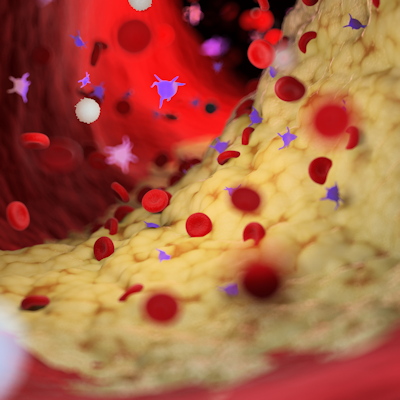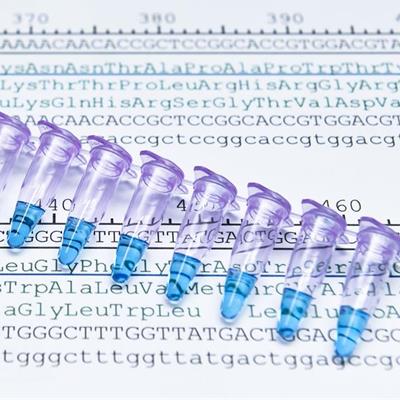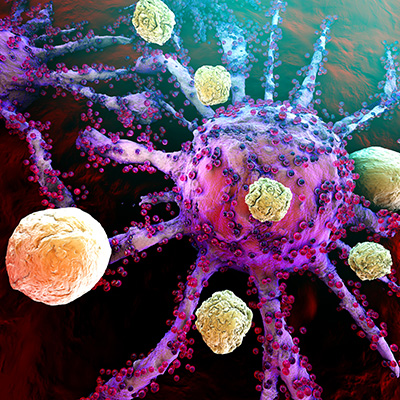 MicroRNAs strongly associated with type 2 diabetes in study
MicroRNAs strongly associated with type 2 diabetes in study
Scientists at the NIH’s National Human Genome Research Institute (NHGRI) have found a set of small RNA molecules, called microRNAs, in human pancreatic cells that are strongly associated with type 2 diabetes. Read More
 Curio Bioscience emerges from stealth mode with whole-transcriptome spatial mapping kit
Curio Bioscience emerges from stealth mode with whole-transcriptome spatial mapping kit
Curio Bioscience on Wednesday emerged from stealth mode, saying it has commenced commercial operations with the launch of Curio Seeker, a high-resolution, whole-transcriptome spatial mapping kit. Read More
 Study finds 41% of infant deaths associated with genetic diseases
Study finds 41% of infant deaths associated with genetic diseases
Researchers from Rady Children’s Institute for Genomic Medicine have found that the genetic disease contribution to infant deaths is higher than expected. Read More
 Fluorescent RNA enables real time detection of neurodegenerative disease driver in live cells
Fluorescent RNA enables real time detection of neurodegenerative disease driver in live cells
Writing in Nucleic Acids Research, scientists at Hokkaido University in Japan and the KTH Royal Institute of Technology in Sweden describe the development of a technique for studying a RNA structure called a G-quadruplex. Read More
 Genes for coronary artery disease identified
Genes for coronary artery disease identified
University of Virginia researchers and their collaborators have identified genes that play a key role in the development of coronary artery disease, the number one cause of death worldwide. The research, published recently in Circulation Research, may provide scientists with promising therapeutic targets as they work to develop new and improved treatments. Read More
 AI tool makes speedy gene editing possible
AI tool makes speedy gene editing possible
Researchers have designed an artificial intelligence (AI) program that may enable the production of customizable proteins called zinc fingers to treat diseases by turning genes on and off. The research published on January 26 in Nature Biotechnology may accelerate large-scale gene therapy development. Read More
 DNA sequencing method offers peek into genomic black box
DNA sequencing method offers peek into genomic black box
University of Cambridge researchers have outlined a new DNA sequencing method that detects where and how small molecule drugs interact with a targeted genome. The research, published on January 23 in Nature Biotechnology, allows precise mapping of drug-genome binding sites, potentially enabling the development of more effective medications. Read More
 Improved tool for long-read RNA sequencing unveiled
Improved tool for long-read RNA sequencing unveiled
Researchers at Children's Hospital of Philadelphia have developed a new, more accurate computational tool for long-read RNA sequencing. The tool, called Error Statistics Promoted Evaluator of Splice Site Options, described Friday in Science Advances, may allow for better diagnosis of rare genetic diseases caused by disrupted RNA and the discovery of potential therapeutic targets in disease. Read More
 Newborn screening for neuromuscular disorder leads to improved outcomes in Australian study
Newborn screening for neuromuscular disorder leads to improved outcomes in Australian study
Newborn screening for spinal muscular atrophy (SMA) improves outcomes by enabling timely access to disease-modifying therapy, a prospective study published in the Lancet Child & Adolescent Health found. Read More
 T-cell therapy fights viral infections following stem cell transplants
T-cell therapy fights viral infections following stem cell transplants
Baylor College of Medicine and Washington University School of Medicine researchers studied posoleucel, an investigational off-the-shelf T-cell therapy that simultaneously targets six different viruses. The results, published January 11 in the journal Clinical Cancer Research, showed promising antiviral efficacy and safety in a phase II clinical trial of patients who had undergone stem cell transplantation to treat blood diseases including cancer. Read More
Conferences
Science Briefs
Member Rewards
Earn points for contributing to market research. Redeem your points for merchandise, travel, or even to help your favorite charity.
Research Topics
Interact with an engaged, global community of your peers who come together to discuss their work and opportunities.
Connect
Tweets by @ScienceBoard






